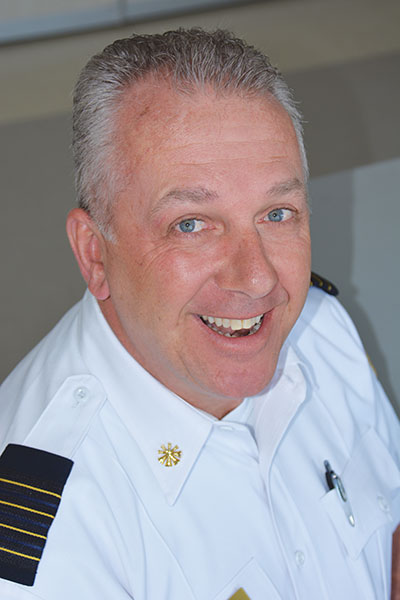
Features
Hot topics
Opinion
Guest Column Fire: May 2014
Four fire crew is the first to arrive at the scene of an MVA and during your size-up you find someone who is bleeding profusely from a deep cut to the neck.
April 24, 2014
By George Birtig
Four fire crew is the first to arrive at the scene of an MVA and during your size-up you find someone who is bleeding profusely from a deep cut to the neck. You apply pressure to the wound as quickly as possible but the patient’s blood has splashed into your face.
You and your partner have removed an unconscious male from just inside the front door of a fully involved house fire. The second-in crew is just arriving on scene. You immediately doff your facepiece and firefighting gloves to assess the badly burned patient.
You are at a medical call at a community housing residence. You are caring for a patient who is coughing profusely. EMS doesn’t arrive to assume patient care for almost 20 minutes.
Have you been exposed to a communicable disease? If so, what happens next?
In 2008, the Ontario government amended the Health Protection and Promotion Act to include mandatory guidelines and protocols for the notification of emergency workers to ensure that they are made aware of specific communicable disease exposure so that appropriate action may be taken. The act requires that each police, fire and EMS department appoint a designated officer so that potentially exposed workers can be assessed as soon as possible. In the case of a significant exposure, the designated officer will contact the area medical officer of health in order to obtain as much information as possible about the contact. The Ministry of Health liaises with the designated officer in order to advise to the exposed worker regarding the steps to take to protect the worker and his or her family and peers.
In some cases, the exposed worker and attending physician may have to make an application under the Mandatory Blood Testing Act to determine if there has been an exposure to Hepatitis B, Hepatitis C or HIV. Similar acts to protect emergency service workers exist in Alberta, Saskatchewan and Nova Scotia.
Perfect. Every firefighter in these provinces should receive the best care and advice available, right? As straightforward as the legislation may seem, the realities of confidentiality regulations, other provincial legislation, and commitment from stakeholders have muddied the waters and led to confusion and frustration for potentially exposed workers. Workers have been exposed to agonizing wait times for information, misinformation, or no information at all.
So where do we go from here? In Ontario, an organization has been created to support workplace-designated officers and help them obtain information, suggestions and advice when navigating this process. The Ontario Association of Designated Officers (OADO) is a not-for-profit organization of designated officers who represent police, fire and paramedic services, public health units and correctional institutions in Ontario. We provide a forum through which Ontario’s designated officers can build capacity in infection prevention and control (IPAC), which will provide consistency among services when responding to exposure risks. Our mission is to mitigate and prevent occupational exposures to communicable disease for all emergency workers through education, co-operation, communication and collaboration. Our vision is to protect the lives of these workers by preventing exposure to communicable diseases.
Recently, the Ontario Ministry of Labour recognized the OADO as a partner for helping to validate best practices and assist in solving IPAC-related issues for emergency workers in Ontario. This partnership will go a long way toward helping to standardize the protection of front-line responders across the province.
Our group currently consists of more than 150 members from more than 70 services and we are growing. We commit to help our members by providing a source for networking and problem solving, monitoring issues and trends, lobbying for health and safety issues, providing IPAC education and resources, co-ordinating an alerting system for IPAC threats, liaising with other IPAC organizations and health and safety groups, participating in national and international committees and conferences, collecting and analyzing exposure statistics, and we supply expert consultation and speakers.
Is it time for your province to follow suit? Take the time to find out how you can obtain this valuable information for your firefighters if they have been potentially exposed to a communicable disease. Do you have the legislation or resources available to you that will help protect your members and their families?
Visit the OADO website at www.oado.ca .

|
|
George Birtig is the vice chair of the Ontario Association of Designated Officers and a deputy chief in Oakville, Ont. Contact him at
gbirtig@oakville.ca and follow him on Twitter at @blazebro95
Print this page